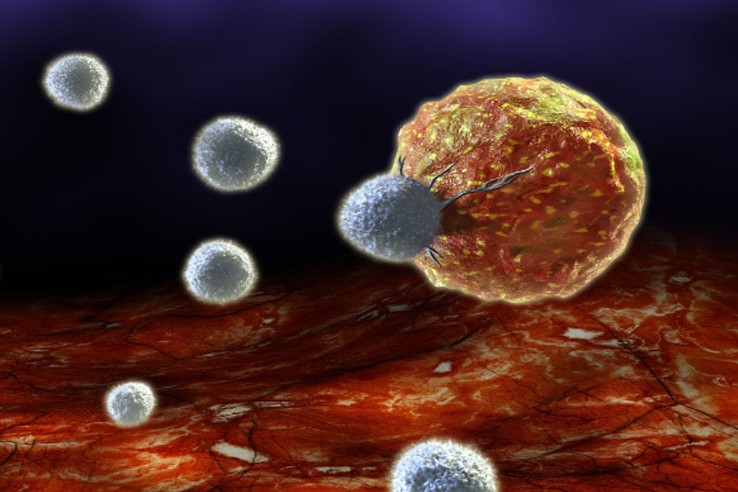
What is CAR-T and how does CAR-T work?
CAR-T is an innovative therapy in the field of oncohaematology, which offers a chance to cure patients with non-Hodgkin’s lymphoma or lymphoblastic leukaemia who have relapsed after one or more conventional therapies
The therapy is based on T lymphocytes, a particular type of white blood cell responsible for defending the body against disease (they are considered the “soldiers” of our immune system).
In patients with this type of blood cancer, however, the lymphocytes are not able to guarantee their own immune defence capacity.
How do CAR-Ts work?
CAR-T requires a complex preparation that begins with taking cells from the patient’s blood.
These cells are then separated from the rest of the blood cells and plasma using a technique called apheresis, which allows the collection of the patient’s own lymphocytes.
The lymphocytes are then sent to the laboratories responsible for the engineering process, following a strict quality control protocol.
Once in the laboratory, the CAR (Chimeric Antigen Receptor) capable of recognising tumour cells is introduced into the lymphocytes: the CAR-Ts thus obtained express on their surface the receptor that detects the CD 19 antigen, a protein characteristic of lymphoma cells.
The procedure takes about 3-4 weeks, after which the CAR-T lymphocytes can be infused into the patient’s bloodstream to attack and destroy the cancer cells.
What are the benefits of CAR-T?
CAR-T therapy offers patients with aggressive and relapsing lymphomas an additional chance to try to control the disease, with a significant increase in survival, and a chance of cure in about 40% of cases.
However, not all patients may be candidates for this therapy and not in all patients CAR-T will bring the desired results.
It is therefore very important to rely on specialised centres where patients are appropriately selected, taking into account the correct risk/benefit ratio.
Are CAR-Ts painful or dangerous?
The infusion of CAR-T is not painful and takes place during a one-week preparatory treatment in hospital.
During the first few days after the infusion, patients are monitored to detect any side effects at an early stage, such as changes in temperature, blood pressure, oxygenation or altered neurological status.
Complications are identified and successfully treated in most cases, with the help of experienced neurologists and anaesthetists.
Some patients require intensive care for a few days.
Which patients are eligible for CAR-T therapy?
CAR-T therapy is indicated in the following cases
- patients with relapsed or refractory diffuse large B-cell lymphoma (DLBCL) after two or more lines of therapy;
- paediatric and young adult patients up to 25 years of age with refractory B-cell acute lymphoblastic leukaemia, in post-transplant relapse or in second or further relapse
- patients with primary mediastinal large B-cell lymphoma (PMBCL);
- patients with Epstein-Barr virus-related large B-cell lymphoma relapsed or refractory to two or more lines of therapy.
Follow up
The patient is re-evaluated for disease status by means of a PET scan, after thirty days, three and six months.
Are there any preparation requirements?
Patients undergo laboratory and instrumental examinations prior to scheduling therapy to assess their suitability.
Read Also:
Lymphoma: 10 Alarm Bells Not To Be Underestimated
Non-Hodgkin’s Lymphoma: Symptoms, Diagnosis And Treatment Of A Heterogeneous Group Of Tumours
CAR-T: An Innovative Therapy For Lymphomas


